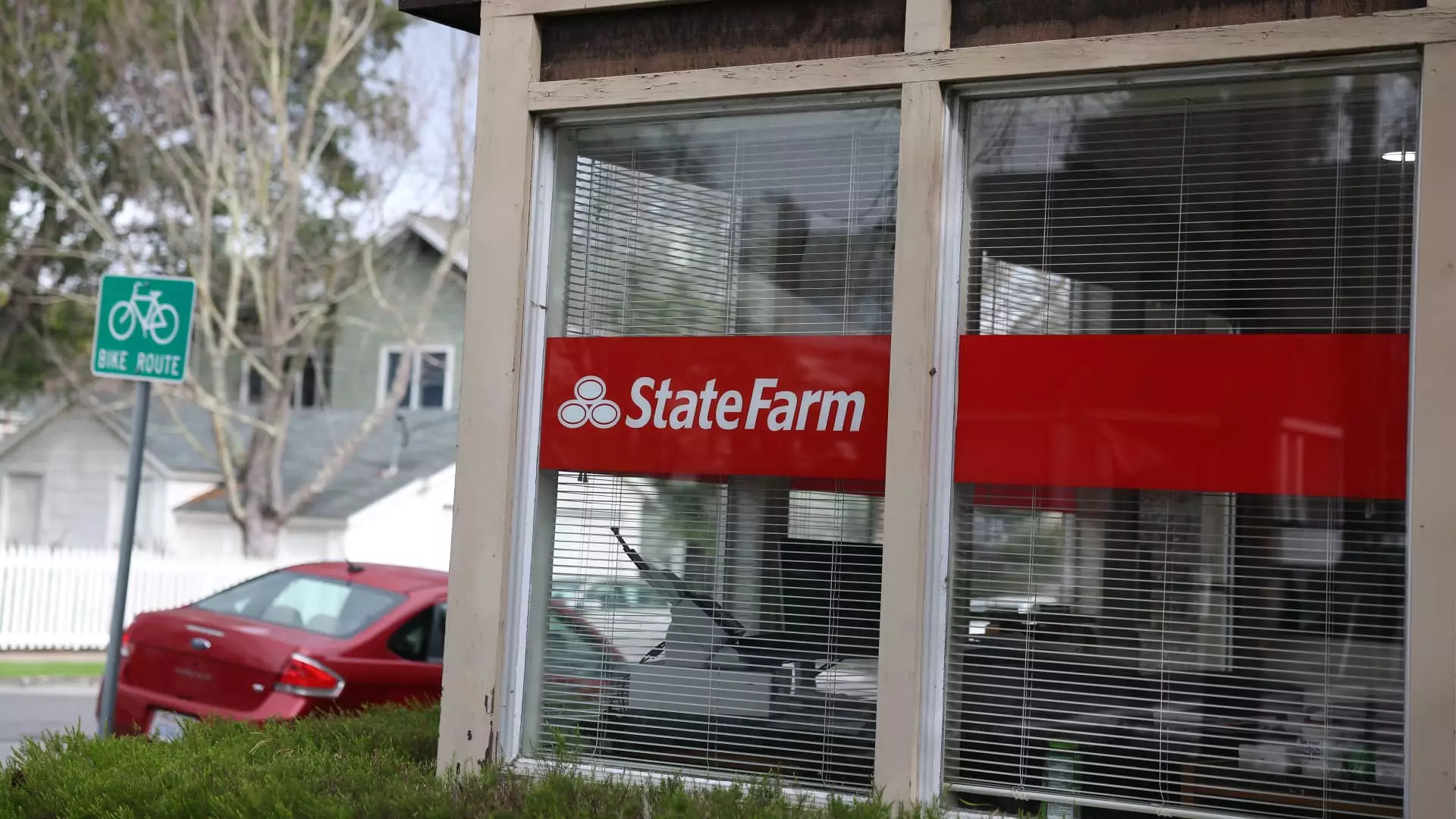State Farm stands at the precipice of a monumental risk, seeking approval for major rate hikes that could ripple through the lives of millions of California homeowners. During a crucial hearing in Oakland—a judicial setting that feels more like the deck of a sinking ship—the insurer is pleading for an emergency increase that hints at deeper, systemic failures within the industry. The stark reality is that State Farm, California’s largest homeowners insurance provider, is strapped for cash, exacerbated by the apocalyptic wildfires that ravaged Los Angeles earlier this year. The damage estimates are staggering, hovering between $250 billion and $275 billion, painting a grim picture of an economy nursing its wounds from the costliest natural disaster on record.
A Desperate Request for Financial Survival
The stakes are sky-high for State Farm; they hold around 20% of the California homeowners insurance market, with nearly three million policies in force. Yet, when an attorney from the California Department of Insurance likens the situation to the Titanic’s doomed voyage, one can’t help but question the ethical implications of their request for a drastic 17% rate hike on homeowners’ policies. This is not just an increase; it is a desperate plea for survival, leaving consumers to bear the financial burden.
The legal representation for State Farm claims that without this increase, they risk financial instability that could endanger millions. The insurer has already projected losses of approximately $612 million after factoring in reinsurance arrangements, yet they remain optimistic that phasing in new rates could stabilize their uncertain financial future. However, can we genuinely trust an institution that seems to oscillate between justifying a 22% initial request and revising it to a still-outrageous 17%?
Regulatory Reforms: Too Little, Too Late
Interestingly, this plea comes amid an industry grappling with unprecedented challenges and changes. California’s insurance landscape is evolving, yet not always for the better. The state has proposed a “Sustainable Insurance Strategy” to help insurers navigate a market increasingly marred by unpredictable natural disasters. But can we accept this as a sufficient response? Janet Ruiz from the Insurance Information Institute argues this framework is essential for correcting systemic failures that have led to a crisis in the first place. However, if this framework is implemented too late, it risks merely patching a leaky roof rather than addressing underlying structural issues.
The regulatory approach is permeated by hesitance. Insurance Commissioner Ricardo Lara, a state officer elected by the populace, has exercised restraint when it comes to authorizing significant rate hikes for homeowners and auto insurers. It’s commendable in theory, but in practice, it raises eyebrows. As many insurance companies, including State Farm, have reported losses far exceeding their collected premiums, one wonders if this cautious approach two-steps on the backs of the very consumers it is meant to protect.
A Shifting Market: The Insurer’s Last Resort
In light of these developments, the actions of State Farm convey a palpable sense of desperation. The company has not only halted the writing of new homeowner policies in May 2023 but has also opted not to renew a staggering 72,000 existing policies. This escalation in risk aversion epitomizes a market spiraling into instability. Amid the chaos, many former policyholders have flocked to the state’s insurer of last resort, the FAIR Plan, which, quite ironically, is becoming overburdened and is itself unsustainable.
State Farm’s decision draws a firm line in the sand: either they raise rates to salvage what remains of their financial integrity or continue spiraling downward in a state that seems no longer willing to accommodate insurers without solid justification. To add more fuel to the fire, S&P Global has even put State Farm’s California arm on a “CreditWatch Negative,” signaling a precarious footing for a corporation already grappling with a tarnished credit rating.
Consumer Advocacy: The Slippery Slope of Profit Over People
However, not all voices are echoing the same tune. Consumer advocacy groups, such as Consumer Watchdog, are staunchly opposing the proposed increases, arguing that State Farm has failed to provide the necessary justification under the existing legal framework. Their lead attorney, William Pletcher, rightly highlights the inconsistency in State Farm’s proposals, questioning not just the morality of their request, but the very system that allows such disparities to exist in rate-setting practices.
Could it be that State Farm’s financial straits are less about natural disasters and more entrenched in their corporate policy making? Are we witnessing a company preparing to sacrifice consumer well-being at the altar of profit? As the stories of families struggling to keep their homes while facing potential insurer abandonment continue to emerge, the question remains whether the industry’s future—and indeed, our collective security—should suffer the consequences of past mismanagement. The unfolding saga offers a haunting reflection on what happens when the bottom line prevails over social responsibility.


Leave a Reply